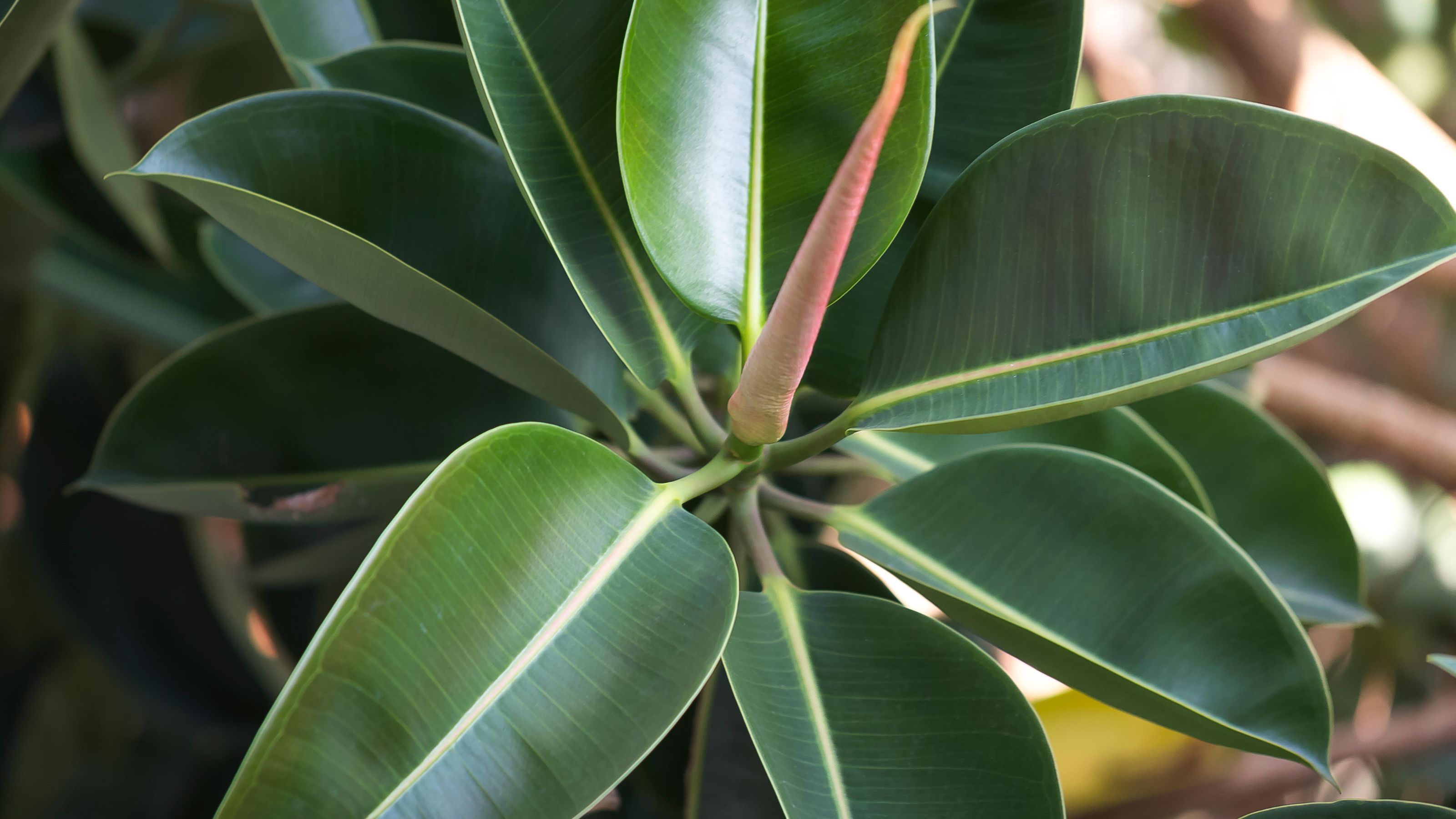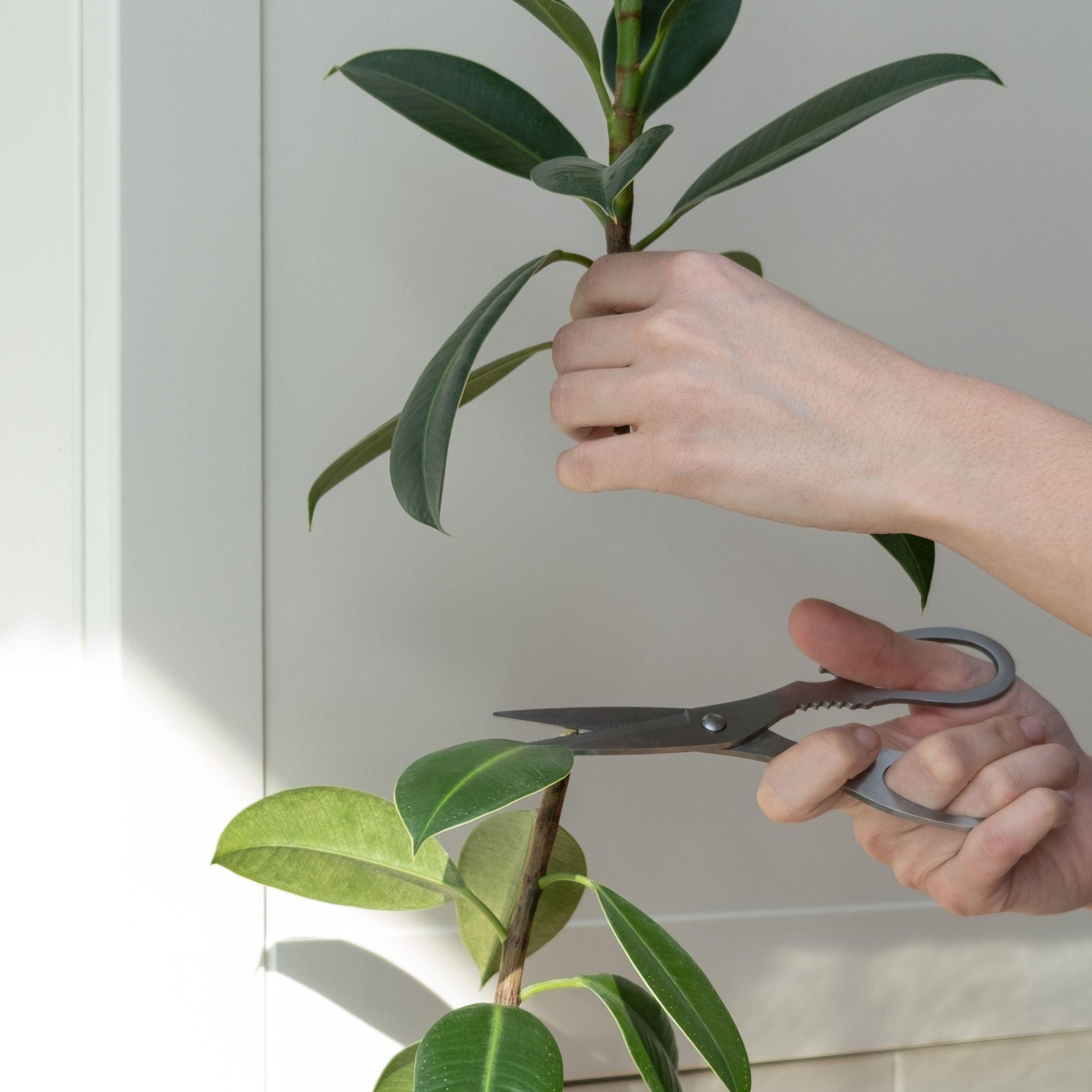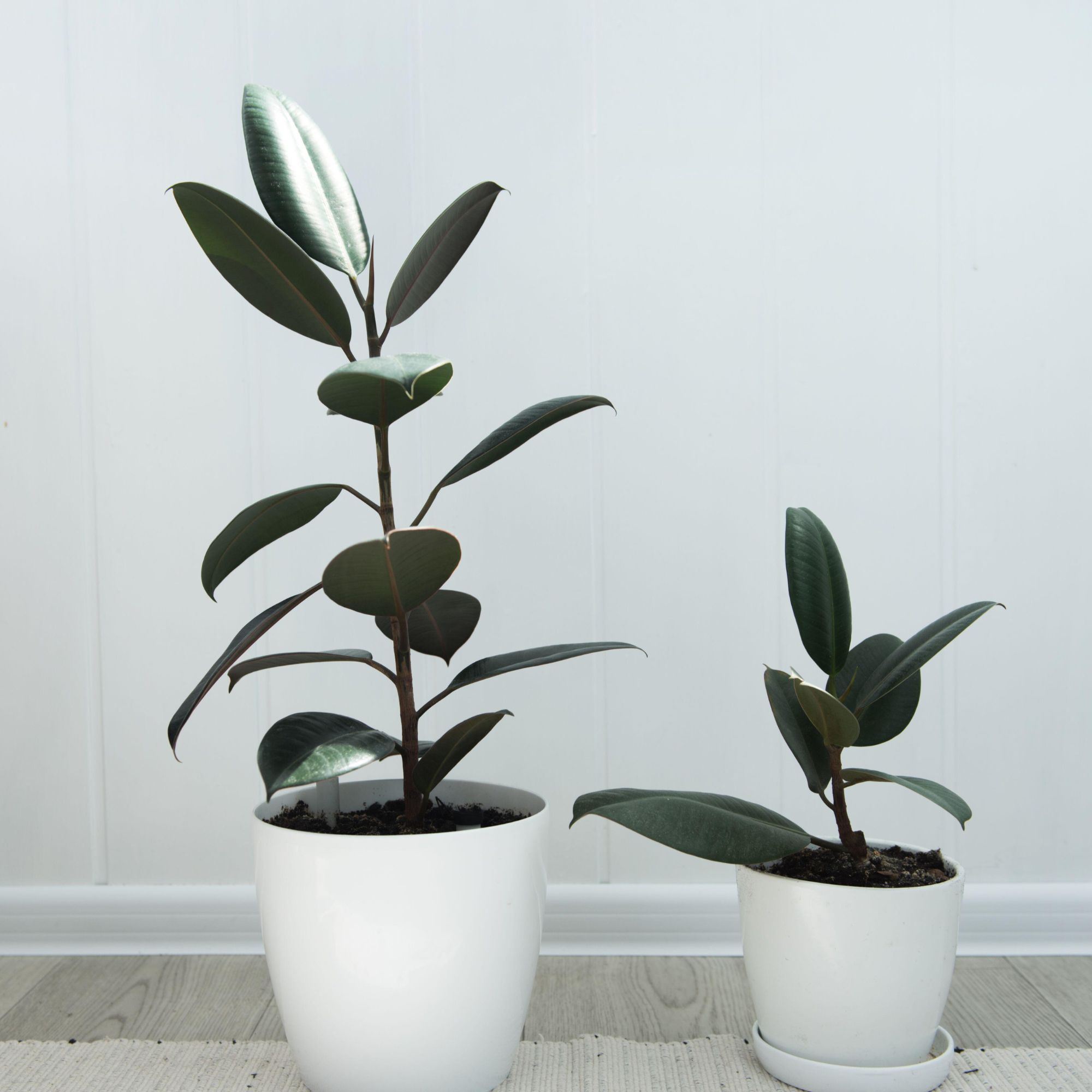How to propagate a rubber plant - expand your houseplant collection for free
Why have just one rubber plant when you can have loads?


Learning how to propagate a rubber plant will help you easily increase your houseplant collection at very little cost.
Beautiful and easy-to-care-for rubber plants also make the perfect gift – especially for those not renowned for their houseplant husbandry.
‘The most common way to propagate a rubber plant is through stem cuttings,' says Evie Brownlee of Grow Urban. Read on to discover how to propagate a rubber plant and make the most of this staple of many house plant ideas.
How to propagate a rubber plant
What you'll need
- A mature rubber plant, like this Rubber plant from Beards & Daisies
- Sterilised pruning shears, like these Mijova pruning scissors from Amazon
- Small pots or containers (you can buy a multi-pack of 10 flower pots from Homebase)
- Vermiculite – like this Fine Grade Vermiculite from Amazon
- Perlite – like this Premium Horticultural Perlite from Amazon
Step-by-step guide
1. Take your cutting

As one of the most popular houseplants, there's no such thing as too many rubber plants – so you'll be thrilled to discover that it's actually surprisingly easy to learn how to propagate a rubber plant.
'To propagate your plant, choose a healthy stem cutting in spring or early summer and cut a 4–6-inch section just below a leaf node,' says Tom Cook, houseplant buyer at British Garden Centres. The leaf node is easy to spot – the leaf node is the small bump on the stem, where the leaf joins the main stem.
When propagating be sure to use sharp, clean secateurs to reduce the risk of infection to the cutting or parent plant. This is usually the easiest way to propagate plants, (especially if you take cuttings the Monty Don way).
Once the cutting has been taken, Evie Brownlee of Grow Urban recommends dipping the cutting's base in rooting hormone for the best results.'
Sign up to our newsletter for style inspiration, real homes, project and garden advice and shopping know-how
2. Prepare your pots

Once you've got your cutting, create a blend of perlite and vermiculate at a 1:1 ratio – ‘this ensures that it has the right drainage and moisture retention levels,’ says Evie Brownlee of Grow Urban.
Place this mix into a small pot with good drainage holes. If you don't have a plant pot of the right size – you can create one by poking medium-sized holes into the bottom of a clean yoghurt pot. Ensuring good drainage holes will also make it more difficult to over-water your plant.
3. Plant your cuttings

Plant the cutting into the pot. ‘Remove any lower leaves resting on top of the compost – this will prevent them from rotting,' advises Evie Brownlee of Grow Urban. 'Then place it in a bright, warm spot and keep the soil damp – not wet – to encourage root growth. Mist it regularly throughout the week.’
While this method is more reliable than water propagation, it is still not guaranteed – try taking a few cuttings if possible. However, once the roots are well established, you can repot it.
FAQs
Can you propagate a rubber plant in water?
Yes, you can propagate a rubber plant in water. However, this is less reliable than propagating in soil. Take a cutting just as you would if propagating in soil but stand in a small vase of water instead. Change the water once a week/fortnight to prevent algae from growing. Once the roots have grown –though this can take several months – pot on in free-draining compost.
You can increase the chances of success when propagating a rubber plant in water by creating a propagation station, as it allows you to create the perfect environment in which your cuttings can flourish.
Can you grow a rubber plant from a cutting?
Yes, just like when propagating a monstera, you can grow a rubber plant from a cutting and it is surprisingly straightforward to do so. However, it is worth remembering that propagation is not a quick process – it can take up to six weeks for the roots to form.
Soon all your friends will be asking you to propagate a rubber plant for them.

Holly is one of Ideal Home’s content editors. Starting her career in 2018 as a feature writer and sub-editor for Period Living magazine, she has continued this role also adding regular features for Country Homes & Interiors and the Ideal Home website to her roster. Holly has a passion for traditional and country-inspired interiors – especially kitchen design – and is happiest when exploring the countryside and hills of the Lake District. A keen gardener, she is a strong believer that you can never have too many houseplants.